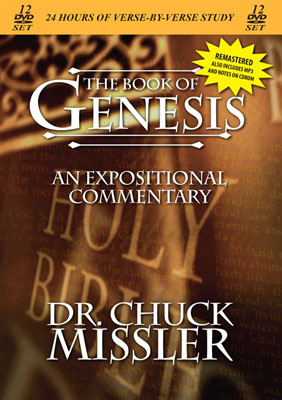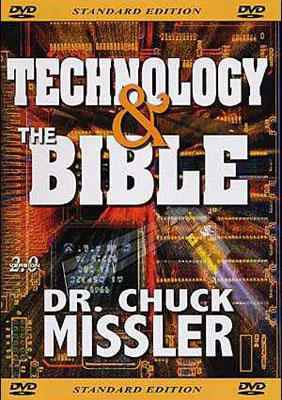(In our March issue, we explored the limits to “smallness”—particle physics—and that our known universe is but a “shadow” of a larger reality.1 In this issue we will review the attempt this summer to probe the present limits of “smallness.”)
The world’s physicists have spent 14 years and $8 billion building the Large Hadron Collider (LHC) at the European Center for Nuclear Research, or CERN,2 in which colliding protons will recreate energies and conditions last seen a trillionth of a second after the initial moment of Creation (commonly called “the Big Bang”).
The LHC is a gigantic scientific instrument near Geneva, where it spans the border between Switzerland and France over 300 feet underground (see photo, below). This is the largest machine in the world—with a circumference of 17 miles—and the fastest race track in the world, with trillions of protons traveling at 99.99% the speed of light, with 600 million collisions each second, traveling at an energy of 7 TeV (tera-electronvolts).
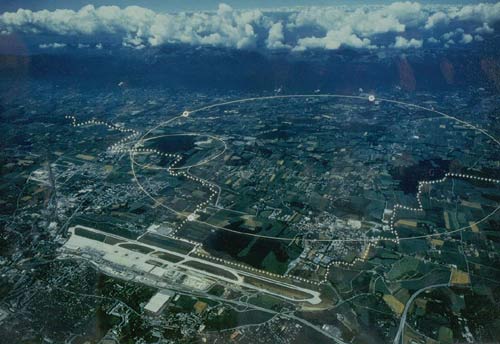 It is a particle accelerator to be used by physicists to study the smallest known particles—the fundamental building blocks of all material things. A hadron is a subatomic particle that contains quarks, antiquarks, and gluons,3 and so experiences the strong force.4 It is regarded as the fundamental element of matter. An accelerator is a machine in which beams of charged particles are accelerated to high energies. Electric fields are used to accelerate the particles while magnets steer and focus them. Beams can be made to collide with a static target or with each other. A collider is a special type of circular accelerator where beams travelling in opposite directions are accelerated and made to interact at designated collision points.
It is a particle accelerator to be used by physicists to study the smallest known particles—the fundamental building blocks of all material things. A hadron is a subatomic particle that contains quarks, antiquarks, and gluons,3 and so experiences the strong force.4 It is regarded as the fundamental element of matter. An accelerator is a machine in which beams of charged particles are accelerated to high energies. Electric fields are used to accelerate the particles while magnets steer and focus them. Beams can be made to collide with a static target or with each other. A collider is a special type of circular accelerator where beams travelling in opposite directions are accelerated and made to interact at designated collision points.
The LHC will go “live” this summer and is expected to tackle some of the deepest questions in science: Is the foundation of modern physics right or wrong? What existed during the very first moment of the universe’s existence? Why do some particles have mass while others don’t? What is the nature of dark matter? Are there extra dimensions of space out there that we haven’t yet detected?
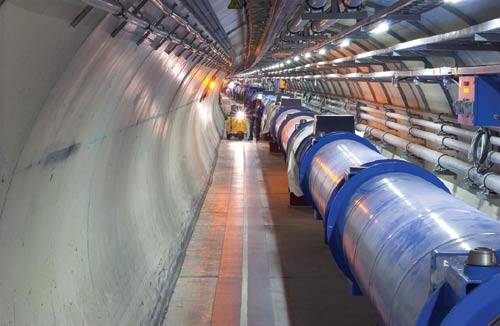 Among the many mysteries scientists hope to probe with this impressive instrument is the very nature of matter, the possible existence of the elusive Higgs boson, and the exploration of both dark matter and dark energy, both unconfirmed in current experience.
Among the many mysteries scientists hope to probe with this impressive instrument is the very nature of matter, the possible existence of the elusive Higgs boson, and the exploration of both dark matter and dark energy, both unconfirmed in current experience.
Dark Matter and Dark Energy
Dark matter makes up about 26% of the Universe. The first hint of its existence came in 1933, when astronomical observations and calculations of gravitational effects revealed that there must be more “stuff” present in the Universe than telescopes could see. Researchers now believe that the gravitational effect of dark matter makes galaxies spin faster than expected, and that its gravitational field bends the light of objects behind it. Measurements of these effects show that dark matter exists, and they can be used to estimate the density of dark matter even though we cannot directly observe it.
Dark energy makes up approximately 70% of the Universe and appears to be associated with the vacuum in space. It is homogenously distributed throughout the Universe, not only in space but also in time—in other words, its effect is not diluted as the Universe expands. (It should be humbling to realize that all we know about matter comes from only a 4% sample!)
Which String?
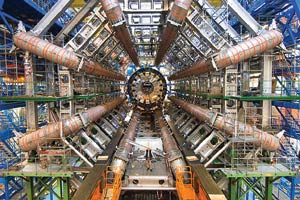 String theory is also an issue that may benefit from the LHC: conceptually complex, with a fascinating but very difficult mathematical structure. Not only does string theory involve the complex study of the geometry of extra dimensions, but the way the structure of the dimensions are chosen appears arbitrary and can lead to different outcomes. This has so far prevented researchers from deriving concrete hypotheses from the theory for comparison with experimental results. In certain cases, the sizes of the extra dimensions are very small and it will be difficult to obtain direct evidence for them. In others, the sizes are far larger and could be observed at new accelerators such as CERN’s LHC.
String theory is also an issue that may benefit from the LHC: conceptually complex, with a fascinating but very difficult mathematical structure. Not only does string theory involve the complex study of the geometry of extra dimensions, but the way the structure of the dimensions are chosen appears arbitrary and can lead to different outcomes. This has so far prevented researchers from deriving concrete hypotheses from the theory for comparison with experimental results. In certain cases, the sizes of the extra dimensions are very small and it will be difficult to obtain direct evidence for them. In others, the sizes are far larger and could be observed at new accelerators such as CERN’s LHC.
The Dark Side of LHC
Some folks outside the scientific mainstream have asked darker questions as well: Could the collider create miniature black holes that last long enough and get big enough to turn into a matter-sucking maelstrom? Could exotic particles known as magnetic monopoles throw atomic nuclei out of whack? Could quarks recombine into “strangelets” that would turn the whole Earth into one big lump of exotic matter?
The builders of the LHC are presently being sued in federal court over fears that the experiment might create globe-gobbling black holes or never-before-seen strains of matter that would destroy the planet. Representatives at Fermilab in Illinois and at Europe’s CERN laboratory, two of the defendants in the case, say there’s no chance that the LHC would cause such cosmic catastrophes. Nevertheless, they’re bracing to defend themselves in the courtroom as well as in the court of public opinion. As far as the fears over the LHC are concerned, the Apostle Peter has described the ultimate “heat death,” which lies outside the known prognostications of thermodynamics:
But the day of the Lord will come as a thief in the night; in the which the heavens shall pass away with a great noise, and the elements shall melt with fervent heat, the earth also and the works that are therein shall be burned up.
2 Peter 3:10
A More Serious Concern
The real concern for scientists should be the tragic loss of cosmic destiny brought about by their attribution of the Creation to random chance rather than to the skillful handiwork of a De-signer. This loss of hope has caused our young people to lose any sense of meaning to life, and to cling to the silliest of alternatives.
Yet, the more you know about the frontiers of science, the more comfortable Genesis Chapter One reads. The fact that our reality is but a shadow of a larger reality is what the Bible has said all along:
Through faith we understand that the worlds were framed by the word of God, so that things which are seen were not made of things which do appear.
Hebrews 11:3
If you haven’t reviewed our Expositional Commentary on Genesis, we encourage you to explore it. We understand that it is being circulated among our government laboratories, and some prominent physicists have come to faith in Christ through it.
Notes:
- Barrow, John D. and Webb, John K, “Inconstant Constants,” Scientific American, June 2005, p.57.
- The name is derived from the acronym for the French Conseil Européen pour la Recherche Nucléaire, or European Council for Nuclear Research, a provisional body founded in 1952.
- Hadrons are particles that feel the strong force. They include mesons, which are composite particles made up of a quark–antiquark pair and baryons, which are particles containing three quarks.
- The strong force holds quarks together within protons, neutrons and other particles. It also prevents the protons in the nucleus from flying apart under the influence of the repulsive electrical force between them (because they all have positive charge). Unlike the more familiar effects of gravity and electromagnetism where the forces become weaker with distance, the strong force becomes stronger with distance.






